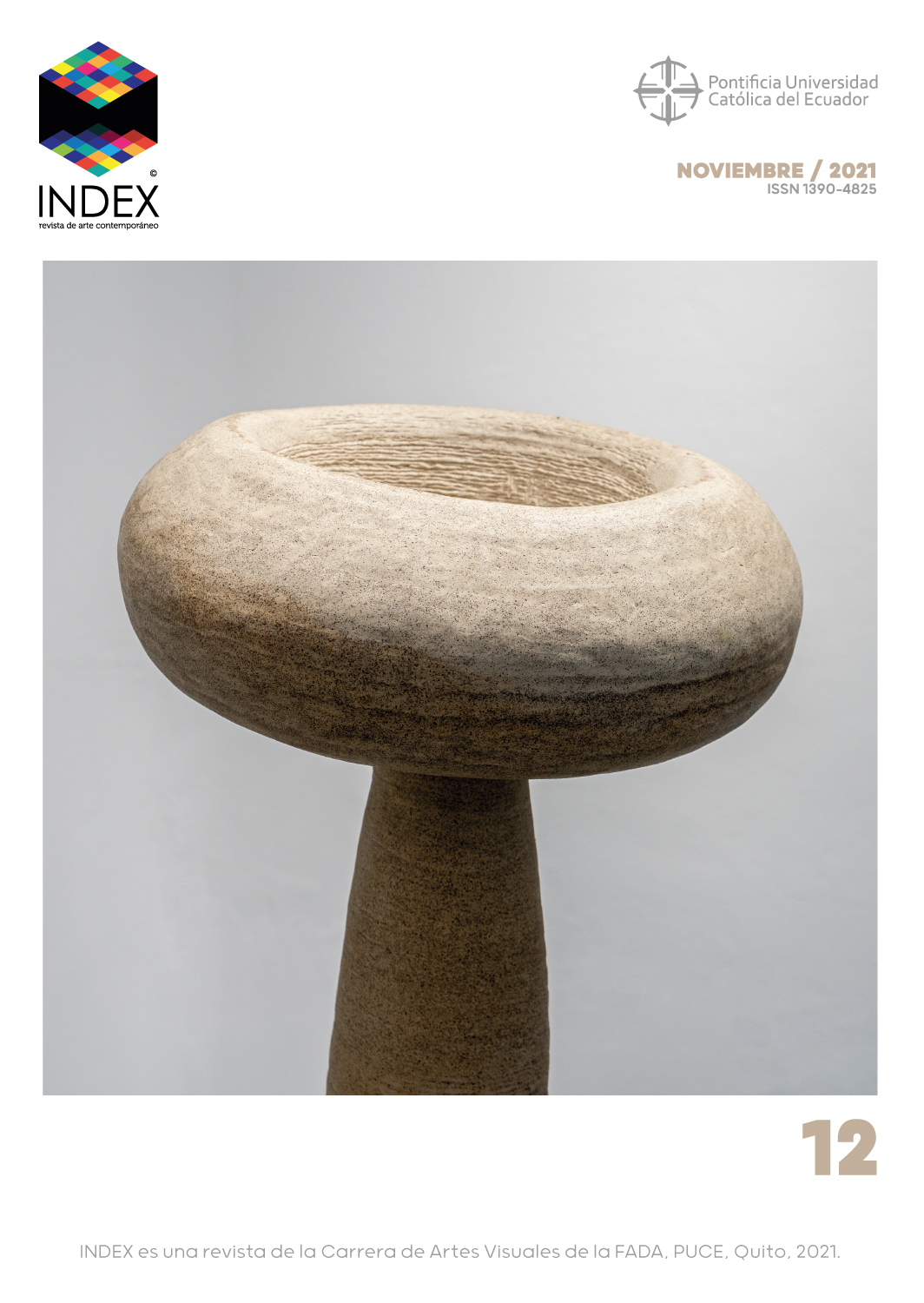Buddha and Coatlicue: two equidistant forms of manifestation
Main Article Content
Abstract
This paper approaches the unexpected encounters that can be found from the understanding of "what is foreign". Buddha and Coatlicue are two stone sculptures that "dialogue" beyond their form, they are traces of two cultures that developed a singular way of seeing the world and that, intentionally or not, manifest similarities in the level of contradiction. Perhaps it is unconventional to understand how two sculptures establish a dialogue, however, from this proposal the distance between China and Mexico turns out to be shorter than it seems. May these reflections serve to place them as worthy representatives of two, not so distant, forms of existence.
Downloads
Article Details
Index, revista de arte contemporáneo maneja sus derechos bajo licencia Creative Commons Reconocimiento-NoComercial 4.0. En ese sentido los envíos quedan sujetos a la decisión del autor.
References
Belting, H. (2007). Antropología de la imagen. Argentina: Katz Editores.
Breton, A. (s.f.). La lengua de las piedras. Obtenido de Documents México: https://vdocuments.mx/andre-breton-la-lengua-de-las-piedraspdf.html
Cheng, F. (2008). Vacío y plenitud. El lenguaje de la pintura china. España: Siruela.
Delhalle, J.-C., & Luykx, A. (1992). Coatlicue o degollación de una madre. INDIANA, 15-20.
Fernández, J. (1966). El mictlan de Coatlicue. Estudios de Cultura Náhuatl, 47-53.
Fernández, J. (1990). Coatlicue: estética del arte indígena antiguo. México: UNAM.
Gruzinski, S. (1994). La guerra de las imágenes. De Cristóbal Colón a "Blade Runner" (1492-2019). México: Fondo de Cultura Económica .
Gruzinski, S. (2018). El águila y el dragón. Desmesura europea y mundialización en el siglo XVI. México : FONDO DE CULTURA ECONÓMICA.
Jullien, F. (2006). Conferencia sobre la eficacia. (págs. 1-30). Buenos Aires: Katzs .

